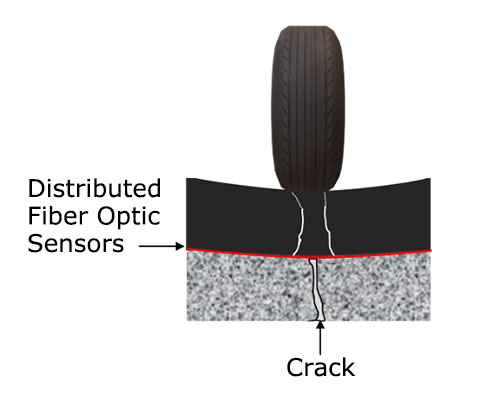Project Details
Abstract
 The United States is experiencing a significant increase in registered motor vehicles, resulting in increasing traffic loads on transportation infrastructure, particularly on roads prone to cracking. Asphalt overlay is commonly used to rehabilitate concrete pavements. However, asphalt overlay often results in reflective cracking, leading to expensive repairs. To address this issue, slab fracturing and asphalt overlay has been popularly applied to rehabilitate cracked concrete pavements in recently years. To investigate the effectiveness of the slab fracturing and asphalt overlay for concrete pavement rehabilitation, his research focuses on understanding how crack propagate through the asphalt overlay. While current crack detection methods struggle to assess bottom-up cracking effectively, posing safety hazards and financial burdens, this project proposes to use distributed fiber optic sensing (DFOS) to monitor bottom-up cracking of the rehabilitated concrete pavements using slab fracturing and asphalt overlay in real time. Through a comprehensive approach combining numerical simulations and laboratory experiments, this research aims to expand our understanding of crack formation mechanisms while assessing the effectiveness of DFOS for monitoring bottom-up cracks in pavements. Numerical simulations using finite element analysis replicate real-world pavement conditions and consider factors such as traffic loading and material properties. Laboratory experiments entail constructing pavement specimens with different layers, installing DFOS sensors to measure strain during crack emergence, and subjecting specimens to controlled loading conditions resembling real-world scenarios. Anticipated outcomes include providing effective pavement condition monitoring alternatives for rehabilitated concrete pavements using slab fracturing and asphalt overlay, contributing to safer and more sustainable management of transportation systems.
The United States is experiencing a significant increase in registered motor vehicles, resulting in increasing traffic loads on transportation infrastructure, particularly on roads prone to cracking. Asphalt overlay is commonly used to rehabilitate concrete pavements. However, asphalt overlay often results in reflective cracking, leading to expensive repairs. To address this issue, slab fracturing and asphalt overlay has been popularly applied to rehabilitate cracked concrete pavements in recently years. To investigate the effectiveness of the slab fracturing and asphalt overlay for concrete pavement rehabilitation, his research focuses on understanding how crack propagate through the asphalt overlay. While current crack detection methods struggle to assess bottom-up cracking effectively, posing safety hazards and financial burdens, this project proposes to use distributed fiber optic sensing (DFOS) to monitor bottom-up cracking of the rehabilitated concrete pavements using slab fracturing and asphalt overlay in real time. Through a comprehensive approach combining numerical simulations and laboratory experiments, this research aims to expand our understanding of crack formation mechanisms while assessing the effectiveness of DFOS for monitoring bottom-up cracks in pavements. Numerical simulations using finite element analysis replicate real-world pavement conditions and consider factors such as traffic loading and material properties. Laboratory experiments entail constructing pavement specimens with different layers, installing DFOS sensors to measure strain during crack emergence, and subjecting specimens to controlled loading conditions resembling real-world scenarios. Anticipated outcomes include providing effective pavement condition monitoring alternatives for rehabilitated concrete pavements using slab fracturing and asphalt overlay, contributing to safer and more sustainable management of transportation systems.
Project Word Files
project files
- UTC Project Information (Word, 87K)
Note to project PIs: The UTC document is limited to two pages. Also, it would be helpful if the Track Changes feature is used when editing either document above. Updated documents should be emailed to ndsu.ugpti@ndsu.edu.